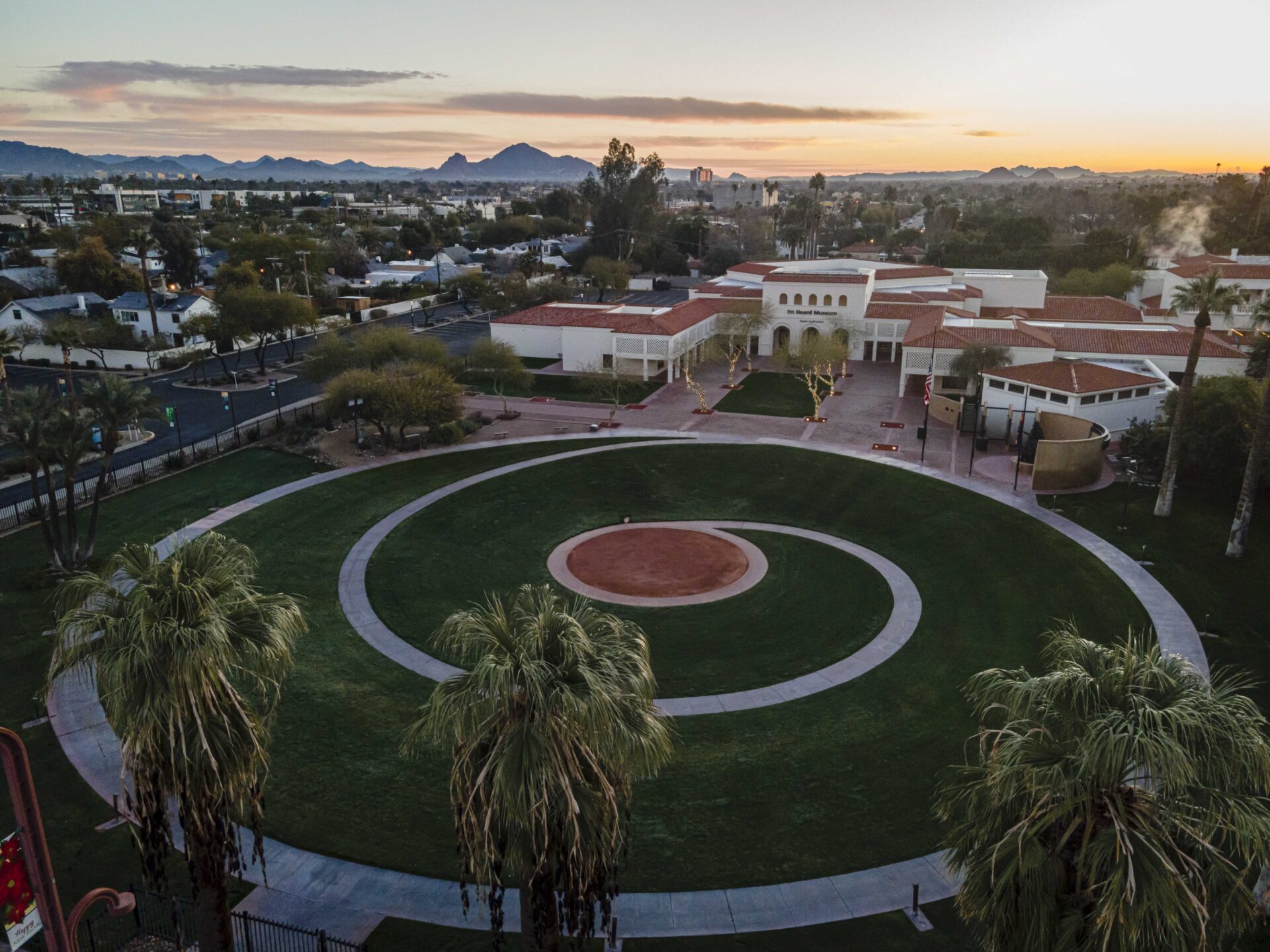
Mission & History
Mission & History
Mission
The Heard Museum connects Indigenous creativity to the world by presenting the voice and vision of American Indian artists.
Core Values
Core values define us as an organization, drive our decision-making, and guide how we treat each other and all we serve.
INTEGRITY | EXCELLENCE | INNOVATION & CREATIVITY | SERVICE
About the Heard Museum
Since its founding in 1929, the Heard Museum, a private nonprofit organization, has grown in size and stature to become recognized internationally for the quality of its collections, world class exhibitions, educational programming and unmatched festivals. It consists of 12 galleries featuring American Indian art and exhibitions, an outdoor sculpture gallery, a world-class museum shop and an outdoor café.
Dedicated to the advancement of American Indian art, the Heard successfully presents the stories of American Indian people from a first-person perspective as well as exhibitions that showcase the beauty and vitality of traditional and contemporary art. The Heard Museum is supported, in part, by the generosity of Heard Museum members and donors, the Arizona Commission on the Arts, and the City of Phoenix Office of Arts and Culture.
Heard Museum Land Acknowledgment Statement
The Heard Museum acknowledges that the land this institution has stood upon since 1929 is within the O’otham Jeved, which the Akimel O’otham have regarded as their homeland since time immemorial. Despite the land’s annexation into New Spain, the Mexican Republic, and the United States, which assumed control after the 1854 Gadsden Purchase, the Akimel O’otham have consistently asserted that this land is theirs, as recounted in their Creation Story, in which Jeved Ma:kai, Earth Doctor, made this place. Today the Akimel O’otham are part of the Four Southern Tribes of Arizona, which is a coalition comprised of the Gila River Indian Community, the Salt River Pima-Maricopa Indian Community, the Ak-Chin Indian Community, and the Tohono O’odham Nation.
The Heard Museum, in what is today downtown Phoenix, Arizona, occupies land within sight of numerous Huhugam, or Ancestral O’otham, canals, farmlands and villages, which is evidence of a presence going back countless generations, long before Father Eusebio Kino and the Conquistador Juan Mateo Mange arrived in the area on November 21, 1697, which harbingered a succession of colonization. Indeed, the founders of the Heard Museum, in particular, benefited from the US making Arizona a Territory in 1863, then a state in 1912, which led to the economic development of Phoenix, which became an election precinct in 1868. Consequently, the Heard acknowledges that it has a moral obligation to the Akimel O’otham, on whose land this museum continues to thrive. The latter is in addition to the Indigenous peoples, from within and well beyond Arizona, currently inhabiting the Greater Phoenix Metropolitan Area.
With this in mind, the Heard proclaims that it remains dedicated to honoring its relationship with the Akimel O’otham through its programming, exhibits, public events, publications, and community service, which it extends to the other Indigenous peoples represented in its collections. The Heard hereby proudly commits itself to a future of building, improving, and nurturing its relationships with the Akimel O’otham and other Indigenous communities, locally, regionally, nationally and internationally.